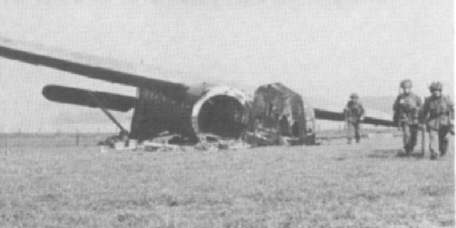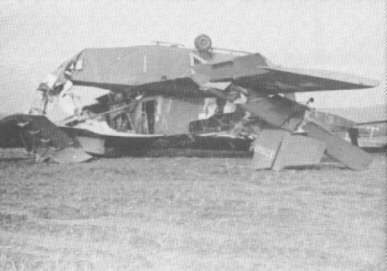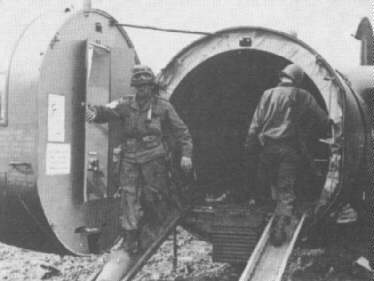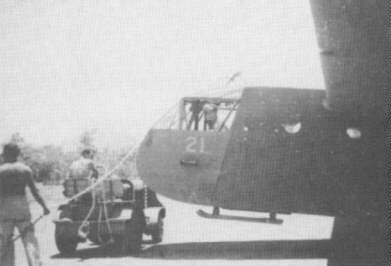
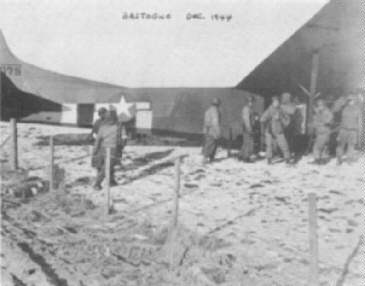 |
|
Bastogne, Belgium, December 26, 1944. Soldiers from the all-black 969th Field Artillery Battalion and some 101st Airborne troopers unload 155-mm howitzer shells from CG-4A glider that has just landed inside the surrounded American stronghold at Bastogne. U.S. Army |
 |
|
Remagen, Germany, March 22, 1945. This extremely
rare photo, taken two days prior to Operation Varsity, shows a CG-4A
glider being loaded with American and German wounded. Less than
half an hour after this photo was taken, the glider was snatched
into flight by a C-47 and flown to a hospital in France. U.S.
Army
|
